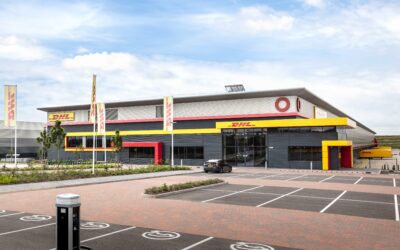How the latest warehouse tech can help improve supply chain efficiencies
What if… your warehouse made its own decisions?
Invite the future into your warehouse and know exactly what happened yesterday, what is going on today and what tomorrow will be like.
Prime Vision is pushing the frontiers of asset intelligence, making flexible warehouse operations a reality.
By using computer vision and AI to enrich raw data into intelligence, your company can operate light-footed, more sustainable and cost efficient, while reacting flexibly to changes in supply and demand.
Think of the following scenario: What if a sleeping mask in your warehouse told your IT system it ‘wants’ to go to John’s house, together with a pillow and a copy of the bestseller ‘How to Sleep’? What if it also told your system it wants to be there on Tuesday, November 16 at 18.30 and the fastest and most sustainable way to get there is by carrier X? What if the signal from this item sets a picking-device in your warehouse in motion and then a robot that delivers the mask, pillow and book to a packing station where an employee puts them together in a box in which they all fit snugly so no air gets shipped and fewer packing materials are needed? This box then gets shipped by said carrier X, all in one van, via a route that is both quick and fuel efficient.
Predict the Future
While the view of autonomous decision making is still a bit futuristic, the world of fulfillment is headed in this direction and it’s moving fast. All the necessary data to turn this scenario into reality can be brought together on a label, creating a digital identity for each item that can be read and interpreted with the help of computer vision, a field in which we have decades of experience. With all systems linked, from online shop (website) to warehouse management system to shipping/carrier options, not only will you have an overview of what is currently going on in your warehouse, you can even go beyond real-time: you can predict what will be happening in the future, so your company can anticipate and be flexible on all levels. “The future of warehousing is not about the concerned product, but about the data available of that product’’, says Aaron Prather, Senior Technical Advisor at FedEx.
Maximizing uptime
Companies in fulfillment have been working with data sets for years and those sets are evolving more and more from descriptive (last week there was a lot of congestion in some aisles of the warehouse) to predictive (from earlier data we know when a shipment arrives so preparations can be made for unloading and storage).
In the coming years it is expected this will further develop into prescriptive intelligence and autonomous decision making. For instance: self-driving forklift #6 takes itself out of the operation for maintenance and is automatically replaced by another, so order picking can continue without interruption. Another use case is that the online order system, warehouse management and shipping system are linked, so that sleeping masks can be ordered promptly and be delivered before running out of stock.
Technologies
There is a lot that can already be done on a semi-autonomous level to future-proof your warehouse and implement technologies that enable you to anticipate events. Think of a dashboard that shows a heat map of activities in your warehouse: which aisles are very busy or even congested with roll carts? The same dashboard displays the reduction in distance traveled in the warehouse due to improved product storage and an order counter with the average duration for order completion.
These data and information are enabling better decision making, to get the most out of your company’s potential, be it in storage space, efficient warehouse routing, digital and physical security or timely maintenance. It’s all about maximizing and improving the quality of your uptime to become more cost efficient, achieve better customer satisfaction and reduce your carbon footprint.
Customers and Carriers
Since customer behavior is the drive behind many processes in fulfillment we would like to zoom in on that. The covid pandemic has vastly accelerated the trend of shopping being done online. Most obviously that resulted in sharp peaks in orders that had to be met in a relatively short time. Customers have also become increasingly demanding in tracking, delivery and return options.
Research by the Baymard Institute has shown that 55% of customers abandon their order because the extra cost is too high. This includes fees for shipping and delivery. On the other hand, if a delivery option is ‘green’, some customers are willing to pay more or wait longer for their package.
As a player in the field of fulfillment this has a profound effect on the relationship with parcel carriers. In many cases the carriers you have been working with for years don’t offer the necessary service level anymore, due to – among other factors – lack of flexibility. You have to look for and engage with multiple parcel carriers, find the right price and service level for different kinds of products and delivery options. Linking the systems of multiple carriers to your own is a big challenge, but it could mean benefits that go further than choosing ‘just’ the cheapest option. It means transparency to all parties, a more competitive market and it would give insight in (trends in) customer demand.
By keeping your system up-to-date through the integration of autonomous decision-making systems, you would enable yourself to overcome these obstacles and provide added value to your customer. The main key is to convert your data into insights based on which you or, in the future, your warehouse can make well informed decisions.




